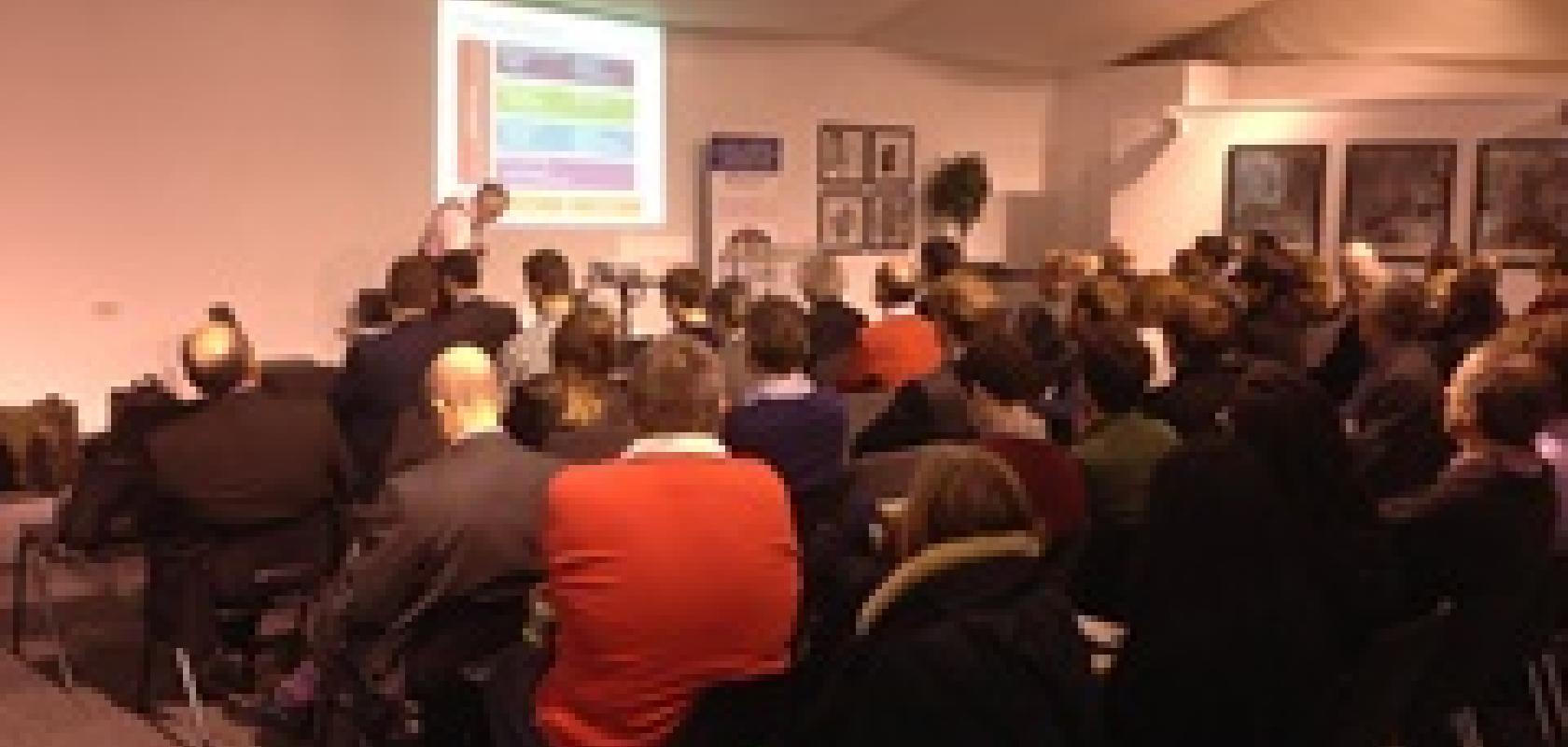Jessica Rowbury reports from an industry day showcasing the latest research at the Centre for Doctoral Training in Integrated Photonic and Electronic Systems
The benefits of having strong links between research and industry were highlighted at the Integrated Photonic and Electronic Systems Industry Day that took place at University College London (UCL) on 14 January.
The event was organised by the Centre for Doctoral Training (CDT) in Integrated Photonic and Electronic Systems (IPES), a research facility set up as part of a collaboration between UCL and Cambridge University. The centre trains postgraduate students and works closely with a wide range of companies worldwide, including Coherent, Hammamatsu, JK Lasers, Qioptiq, SPI Lasers and more.
In addition to showcasing the centre’s latest research achievements, a main focus of the day was to provide an environment for students to meet with industry partners, who discussed their own research goals and research opportunities for graduates.
Andrew Lord, head of Optical Networks Research for BT, spoke about the telecommunication giant’s need for optical engineers to help solve data capacity challenges associated with optical fibres. He showed a graph depicting how consumer internet traffic has increased significantly over the last ten years – from close to zero in 2005, to between two and three terabits (one trillion bits) in 2015. ‘The growth has been exponential,’ Lord said.
Microsoft Research is interested in recruiting graduates for the Devices and Consumer section of its business, which includes smart phones, tablets, computers, and game consoles. ‘This is where we’ve recently noticed that we really need to increase our intake of optical engineers,’ said Dr Adrian Travis, senior researcher for Microsoft, during his presentation. ‘We want [to work on] optics because we want better human-computer interfaces.’
In particular, engineers are needed for the company’s HoloLens virtual reality (VR) headset, which has yet to be released but has already been described as one of Microsoft's most innovative products. The device will let users see and interact with high resolution holograms. ‘Virtual reality is a hot topic at the moment, and there is a lot of competition,’ Travis said. ‘[Microsoft’s HoloLens team] is very keen for optical engineers,' adding that this applies in particular to graduates with a knowledge of fabricating nanostructures.
The breadth of research carried out by CDT students was evident at the event. Projects included the fabrication of flexible polymer-nanowire solar cells, 3D lidar for scanning the inside of buildings, and bedside neonatal brain imaging as an alternative to MRI.
A unique feature of the CDT programme is that although it is a single course, students are taught at both UCL and Cambridge universities. Combining the photonics and electronics expertise of two world-leading universities helps to ensure that students gain the skills to drive the research, development, and commercialisation of photonics systems for use in applications ranging from telecommunications and industrial manufacture, to agriculture and medicine.
‘We have a very large number of research groups, both in Cambridge and UCL. They cover the range of activities from the very materials related to the very systems related,’ said Professor Alwyn Seeds (UCL), a director of the IPES CDT. ‘We match the programme to the particular needs of the students – if they know all about photonic devices, we don’t encourage them to take more courses in photonic devices; we encourage them to take talks on large scale integration, for example,’ Seeds added. ‘So [students] can gain tools for future research that are much broader than a first degree graduate would typically have.’
The CDT was founded in 2009 as the CDT in Photonic Systems Development, which focused primarily on photonics. However, the course now carries an increased emphasis on the integration of electronic systems. ‘We’re trying to improve overall systems capacity – over the years it has become increasingly clear that, more and more, electronics is being integrated into photonics, and vice versa,’ said Professor Richard Penty, also a IPES CDT director, at the event. ‘Systems is very much a part of it – we shouldn’t just be concentrating on science or physics, but we should be bringing everything together in a system.’
The event also presented an opportunity to discuss how the centre should continue its research. The audience was asked about the types of new technologies and unsolved problems that PhD students should look to research and develop.
Tom Empson, senior consultant for Cambridge Consultants, pointed out that the company has a very strong interest in breakthrough products in the consumer sector. He suggested looking into free space optical communication, for example LiFi – a light technology that enables internet speeds 100 times faster than WiFi. He went on to say that LiFi devices would not only be useful for homes, but also for places such as airports where there is no GPS signal.
Dr Helen Swygart from Qioptiq also expressed a desire for research into gradient index lenses, whereas BT's Andrew Lord suggested developing cost-effective, ultra high bandwidth optical fibres for distances of 25-30km.
Other suggestions from industry members included the remote powering of 100W devices, and very narrow band optical filters that are more stable, and that a have narrower spectral range, than existing products.
Further information
Centre for Doctoral Training (CDT) in Integrated Photonic and Electronic Systems (IPES)


